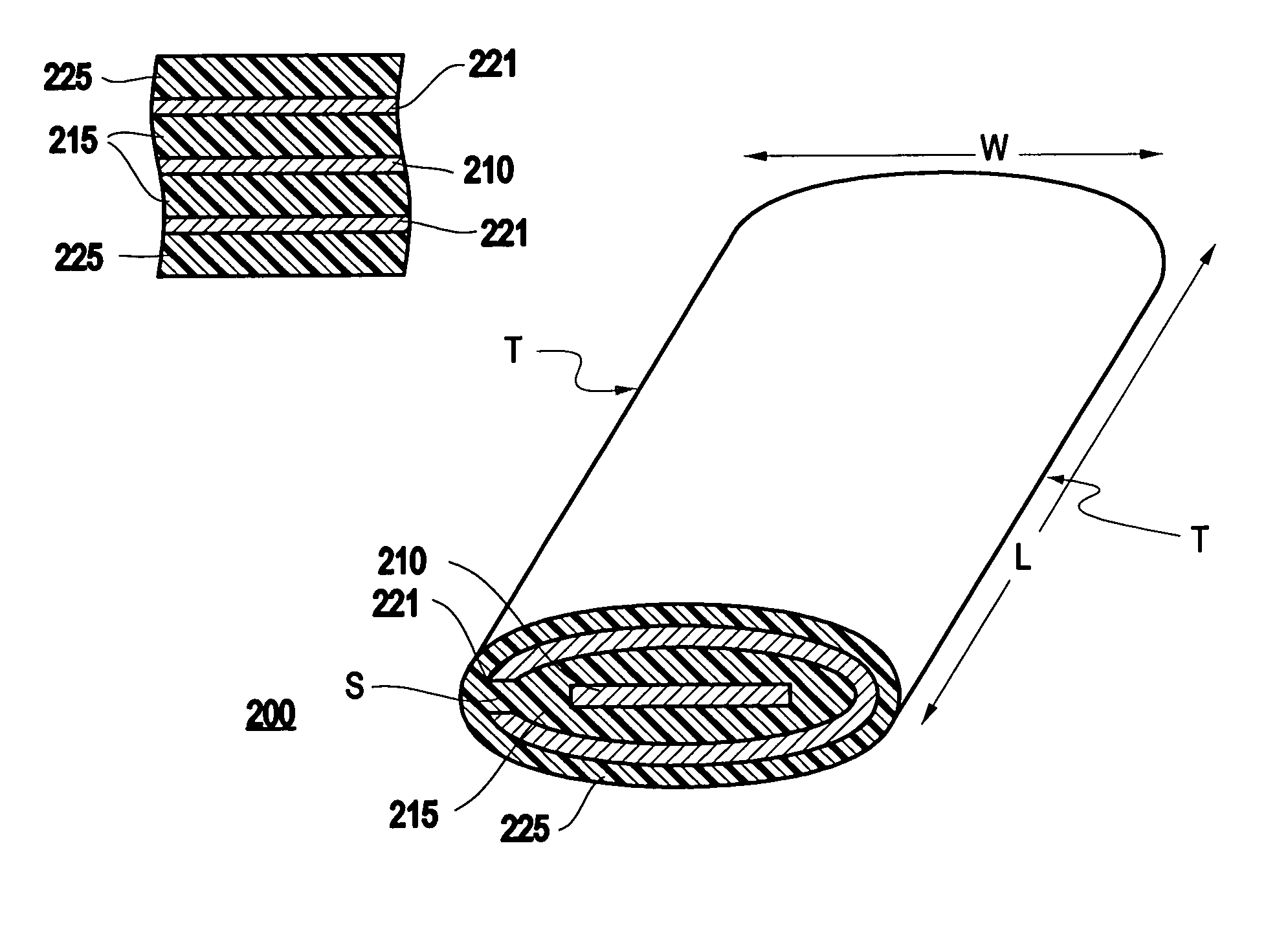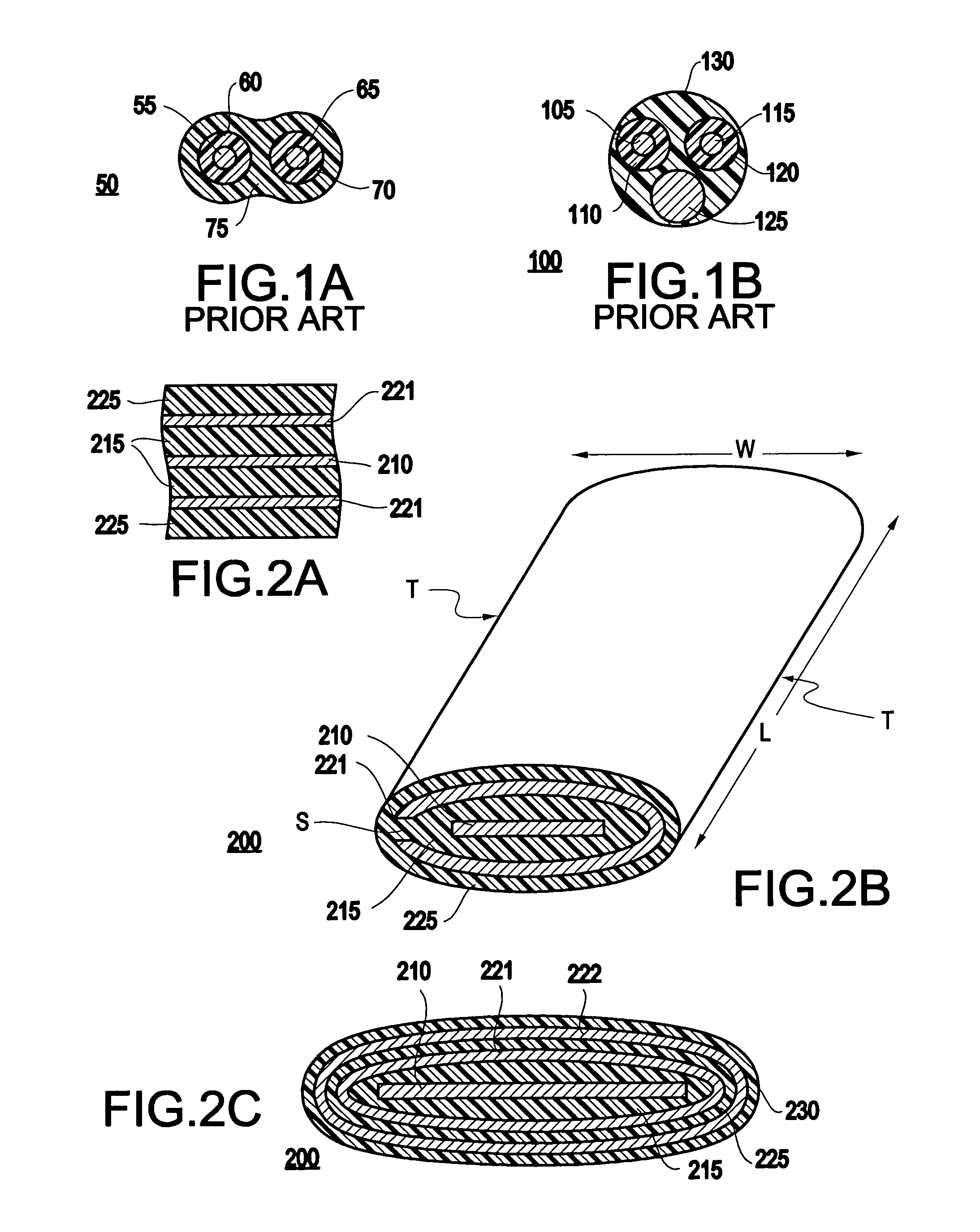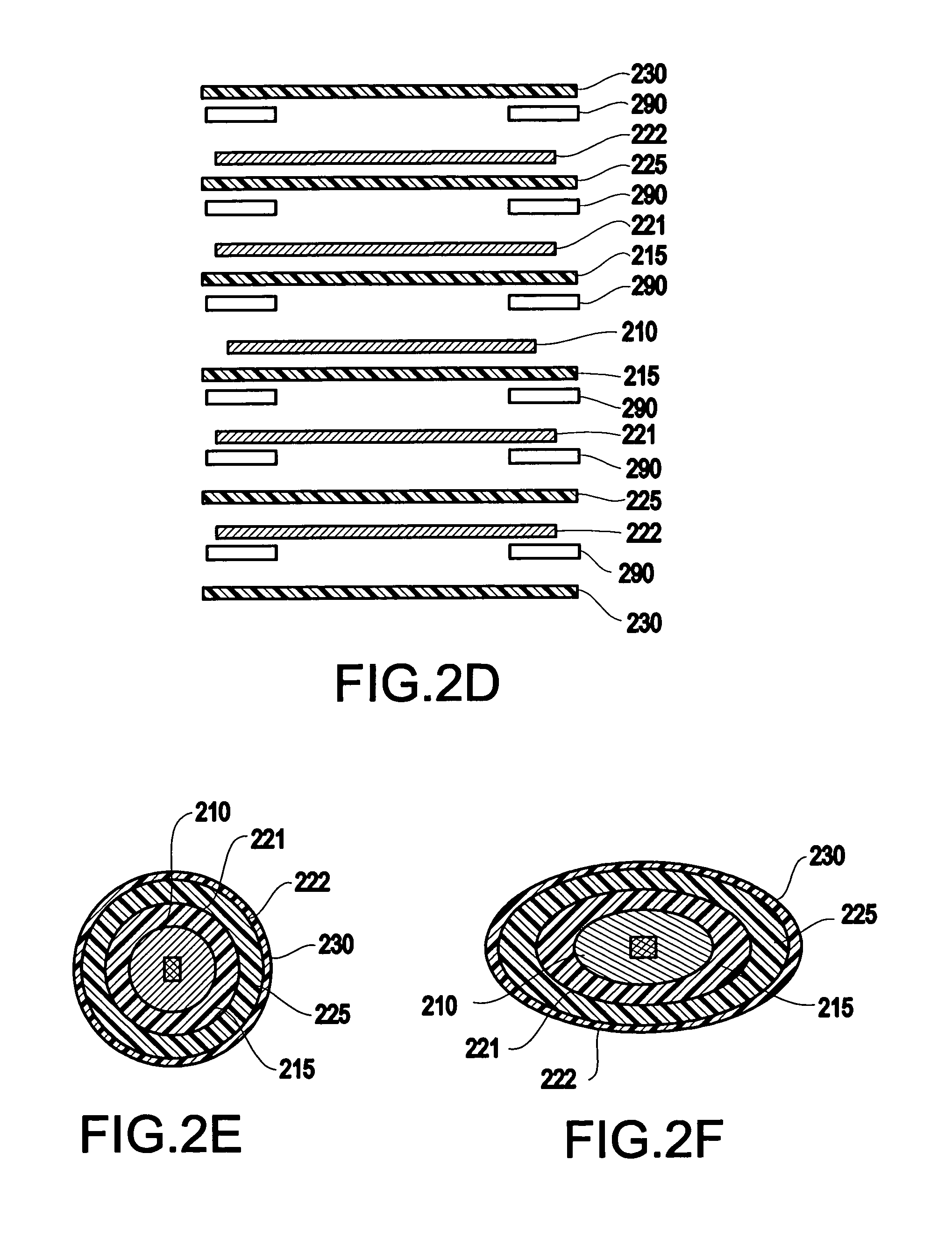Electrical wire and method of fabricating the electrical wire
a technology of electrical wire and wire, which is applied in the direction of insulated conductors, power cables, cables, etc., can solve the problems of increased risk of failure, and significant fire damage to the electrical wire, and achieves the effect of safe and convenient electrical wire, easy fabrication
- Summary
- Abstract
- Description
- Claims
- Application Information
AI Technical Summary
Benefits of technology
Problems solved by technology
Method used
Image
Examples
Embodiment Construction
[0052]Referring now to the drawings, and more particularly to FIGS. 2A–17, the present invention includes an electrical wire 200 and a method 1500 of fabricating the electrical wire. As illustrated in FIG. 2A, an the exemplary embodiment of present invention is directed to an electrical wire 200 including at least one electrifiable conductor 210, and first and second return conductors 221 which are respectively formed on opposing sides of the at least one electrifiable conductor 210, such that the at least one electrifiable conductor is at least substantially entrapped by the first and second return conductors 221. The wire 200 may also include a first insulating layers 215 and second insulating layers 225.
[0053]It should be noted that unless otherwise noted, any of the layers (e.g., conductors, insulating layers, etc.) in the present invention and discussed herein may be formed of a plurality of layers. Thus, for example, insulating layer 215 should be construed as at least one ins...
PUM
| Property | Measurement | Unit |
|---|---|---|
| distance | aaaaa | aaaaa |
| thickness | aaaaa | aaaaa |
| total thickness | aaaaa | aaaaa |
Abstract
Description
Claims
Application Information
 Login to View More
Login to View More - R&D
- Intellectual Property
- Life Sciences
- Materials
- Tech Scout
- Unparalleled Data Quality
- Higher Quality Content
- 60% Fewer Hallucinations
Browse by: Latest US Patents, China's latest patents, Technical Efficacy Thesaurus, Application Domain, Technology Topic, Popular Technical Reports.
© 2025 PatSnap. All rights reserved.Legal|Privacy policy|Modern Slavery Act Transparency Statement|Sitemap|About US| Contact US: help@patsnap.com



